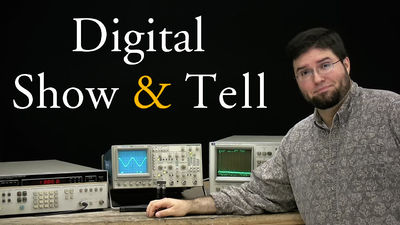
Hi all, some amount of (strictly non-commercial) organizational self-promotion here:
Xiph.Org's Episode 2: Digital Show and Tell is out!
This one is aimed squarely at some of the most fundamental questions and misconceptions that technically oriented people tend to have about digital audio. It's a followup to last year's "Why 24/192 Music Downloads Are Very Silly Indeed" based on the email we got in response to the article. It should be considerably less controversial (I hope) as it's all basic facts that can be checked easily using a DAC, a scope, and a spectrum analyzer. Rather than rely on math and lengthy explanations, the goal here is simply to show reality in action.
I hope folks enjoy it!

